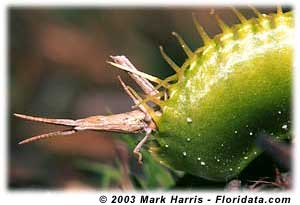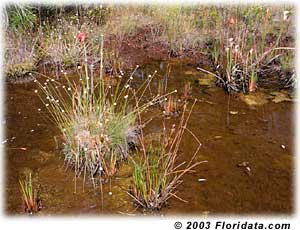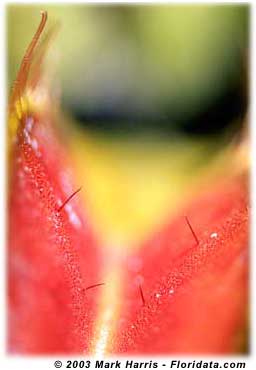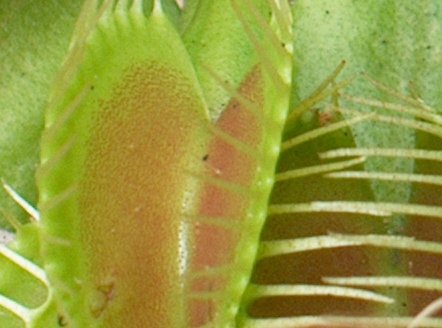
SCIENTIFIC CLASSIFICATION:
- Kingdom: Plantae
- Division: Magnoliophyta
- Class: Magnoliopsida
- Order: Caryophyllales
- Family: Droseraceae
- Genus: Dionaea
- Species: muscipula

THE VENUS FLYTRAP |
by Jacalyn Benson |
 |
SCIENTIFIC CLASSIFICATION:
|
 |
WHAT: A perennial carnivorous wetland plant that absorbs nutrients by trapping and digesting insects. |
 |
|
|
 |
WHY: The flytrap’s native habitat has very sandy, wet soil with low nitrogen content, which is why it is necessary for the flytrap to digest insects. |
 |
WHERE: Outdoors: The flytrap is native to bogs and wet seepage areas in North and South Carolina. |
|
Indoors: The flytrap should be grown in a greenhouse or terrarium.
|
 |
HOW: The flytrap attracts insects with red coloring or nectar on the interior of each trap. When an insect lands in the trap it triggers hairs that then cause the trap to close. If an insect is caught it will move around and continue to trigger the hairs inside the flytrap. Digestive enzymes will be released and the insect will be digested and absorbed in a matter of days. If a raindrop or something other than an insect triggers the trap it will reopen to await the next insect. Each trap on the plant may consume two to four insects during its lifetime. Excessive false stimulation of a trap may cause it to stop responding. |
 |
| Source: Wikipedia | copyright info |
| Source: Floridata.com | copyright info |
| Contact: Jacalyn Benson |